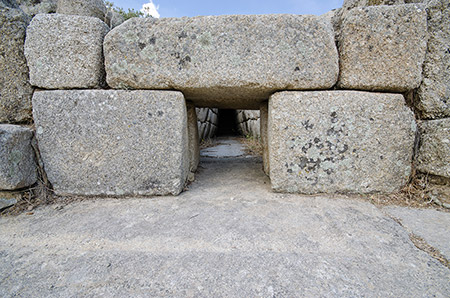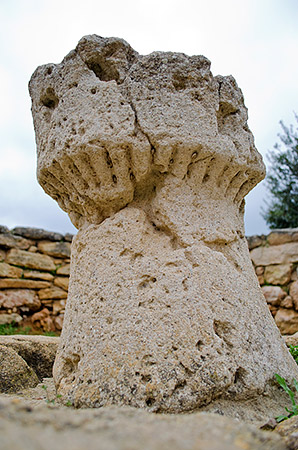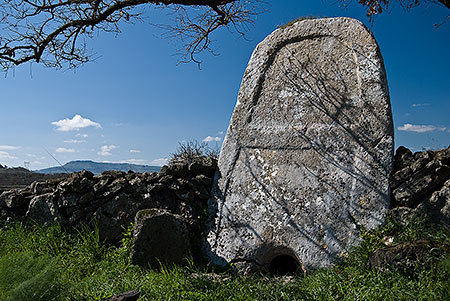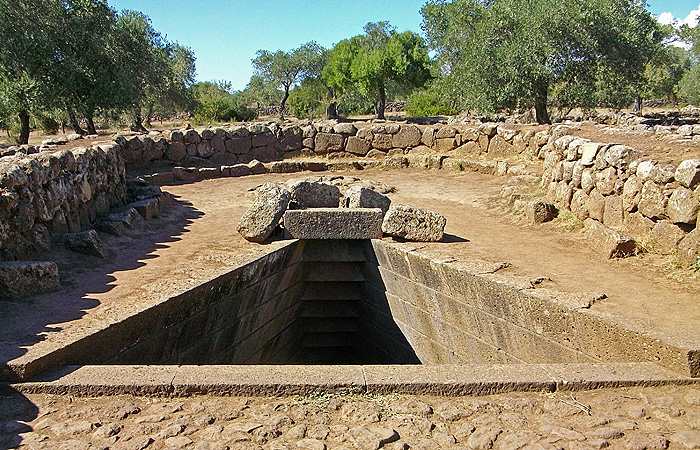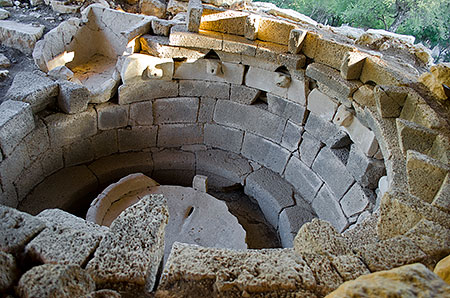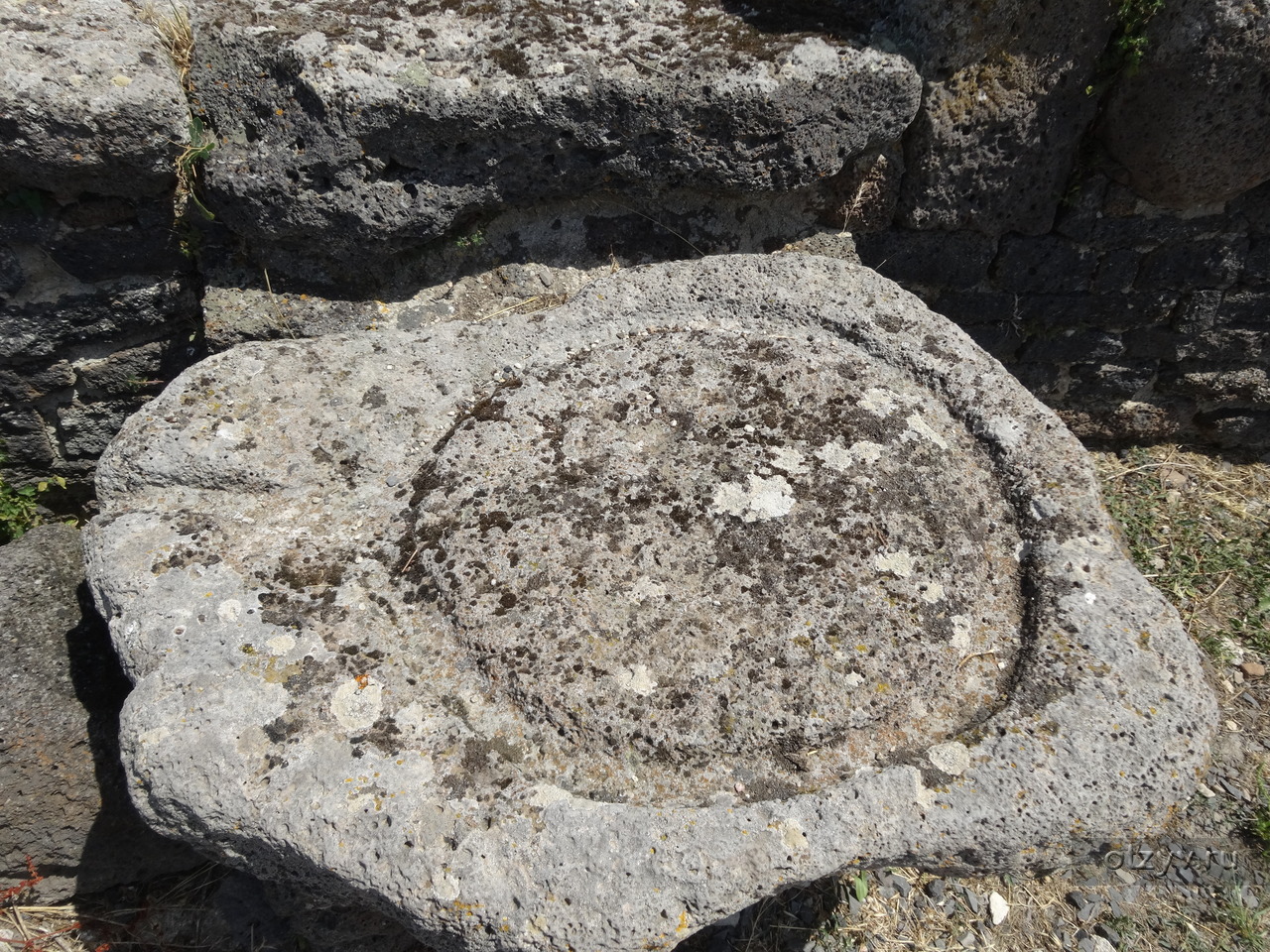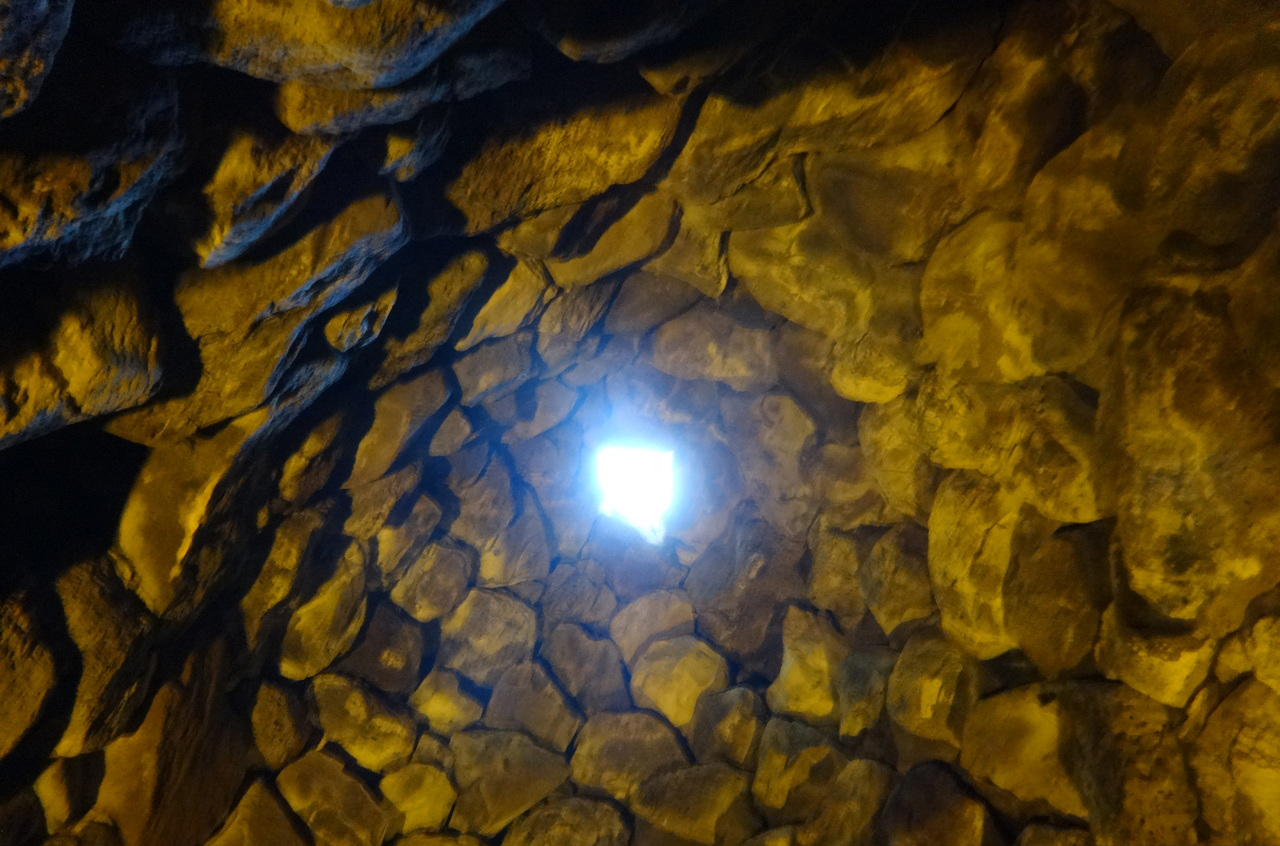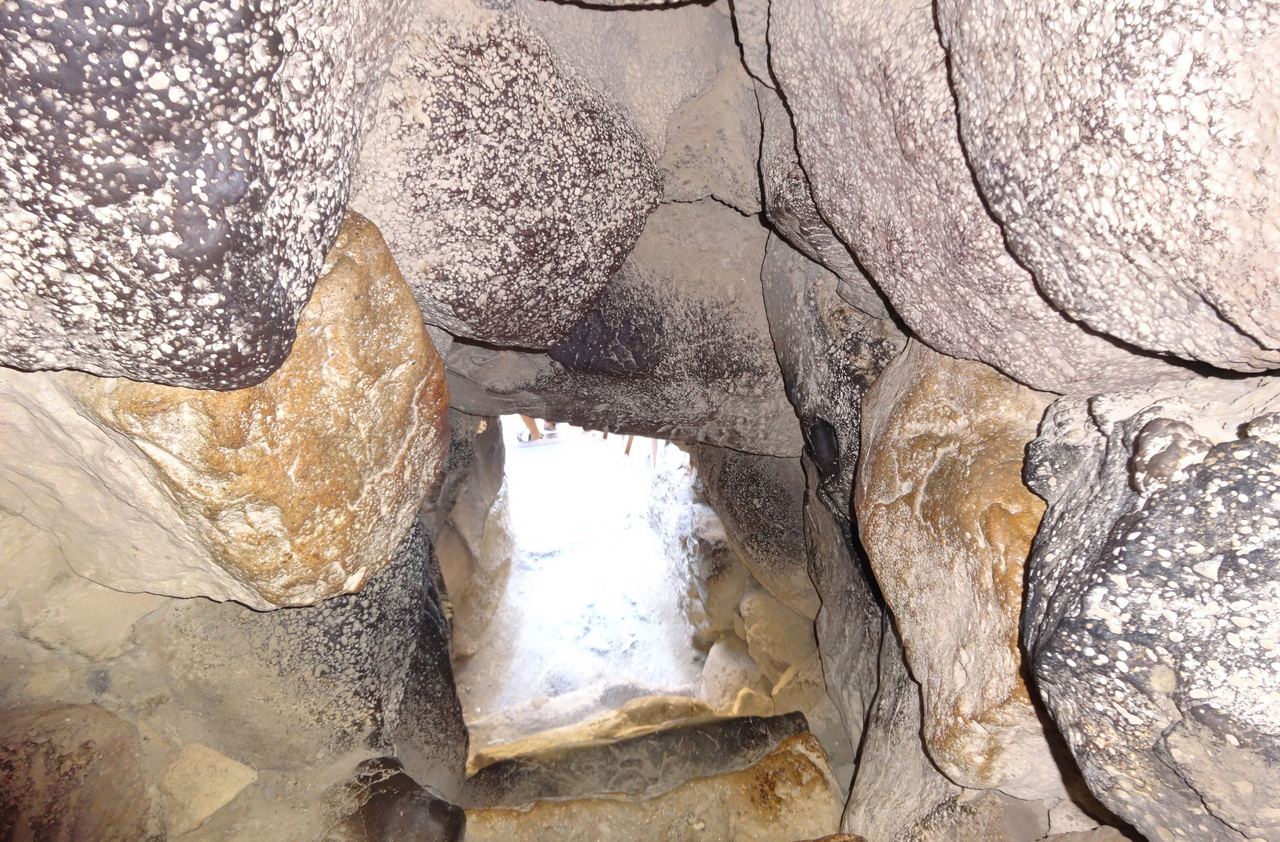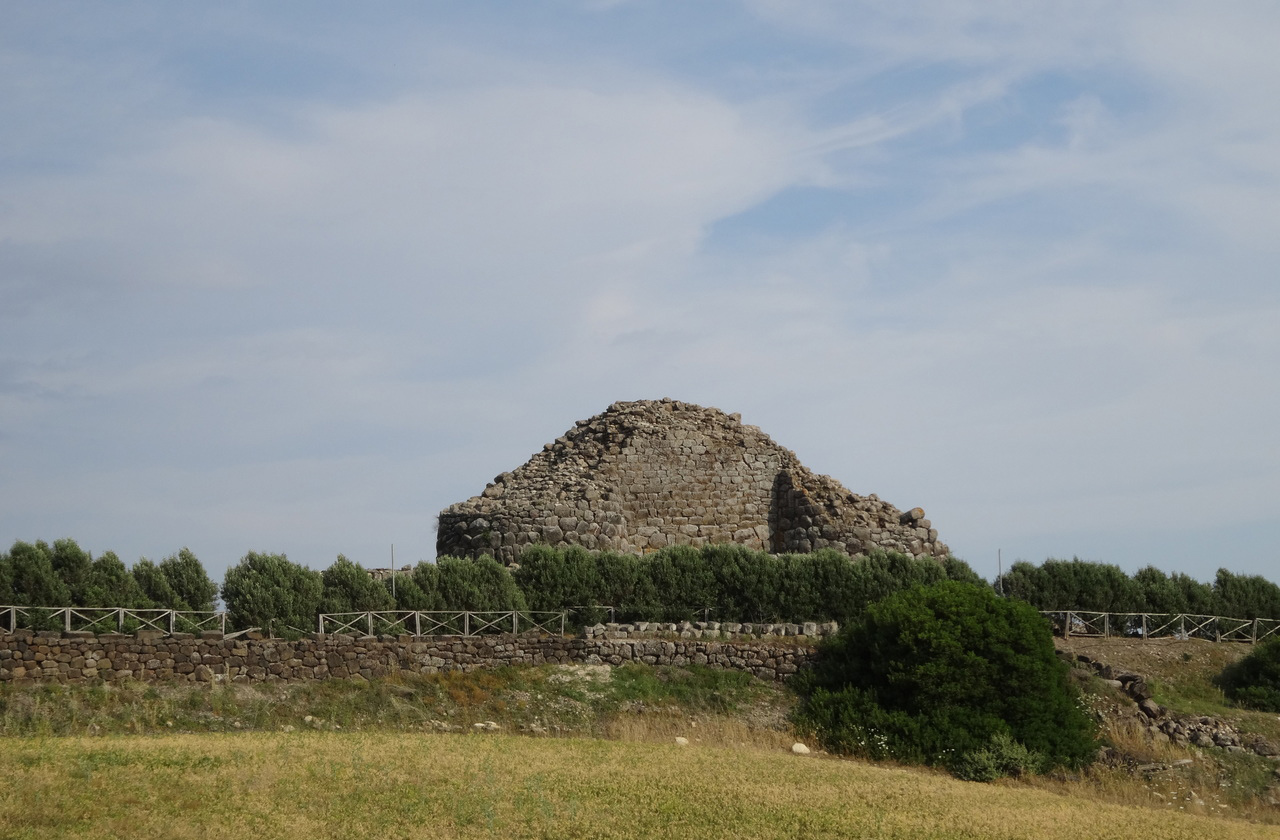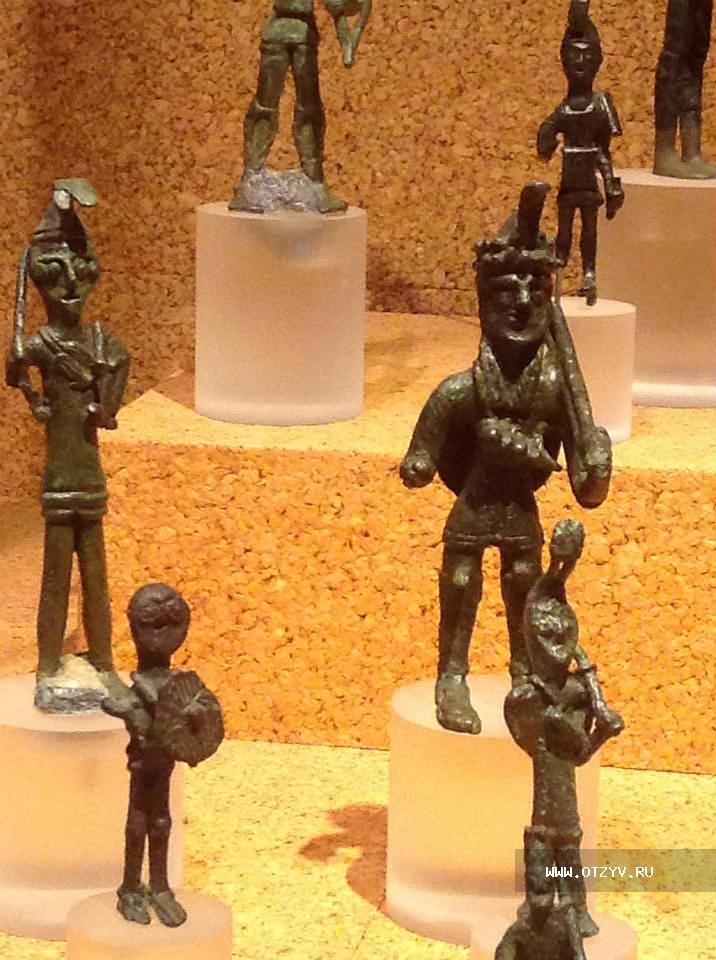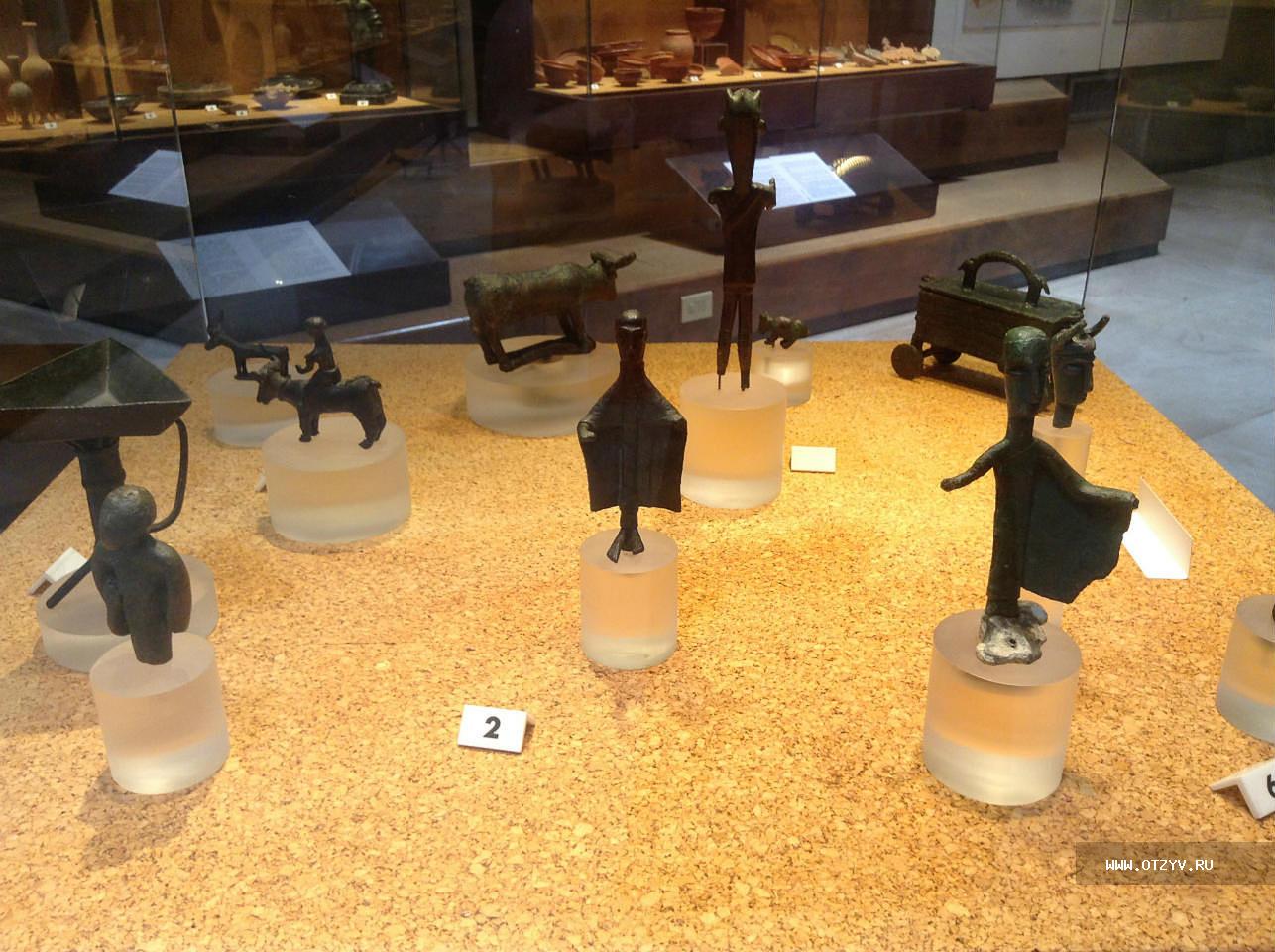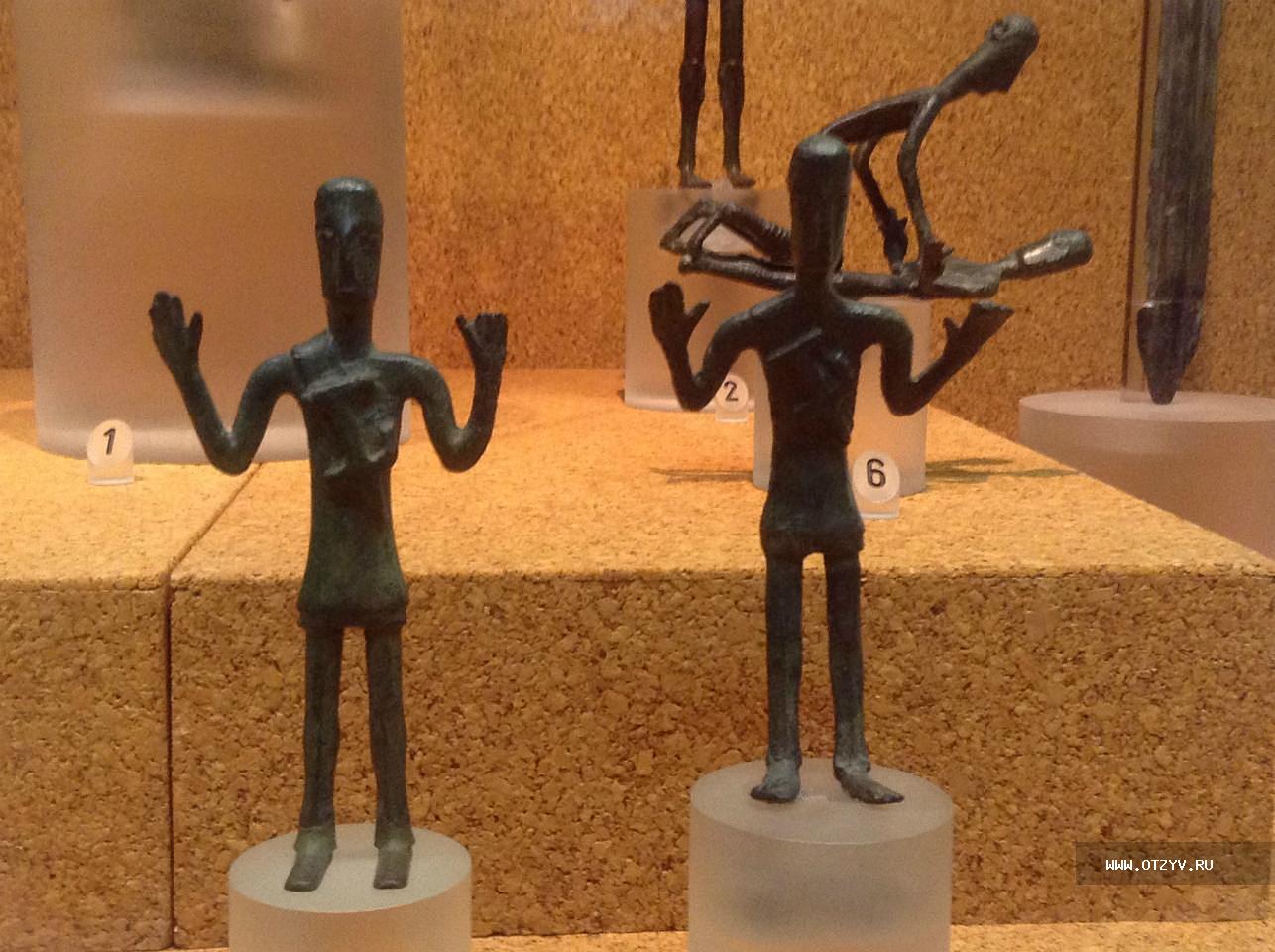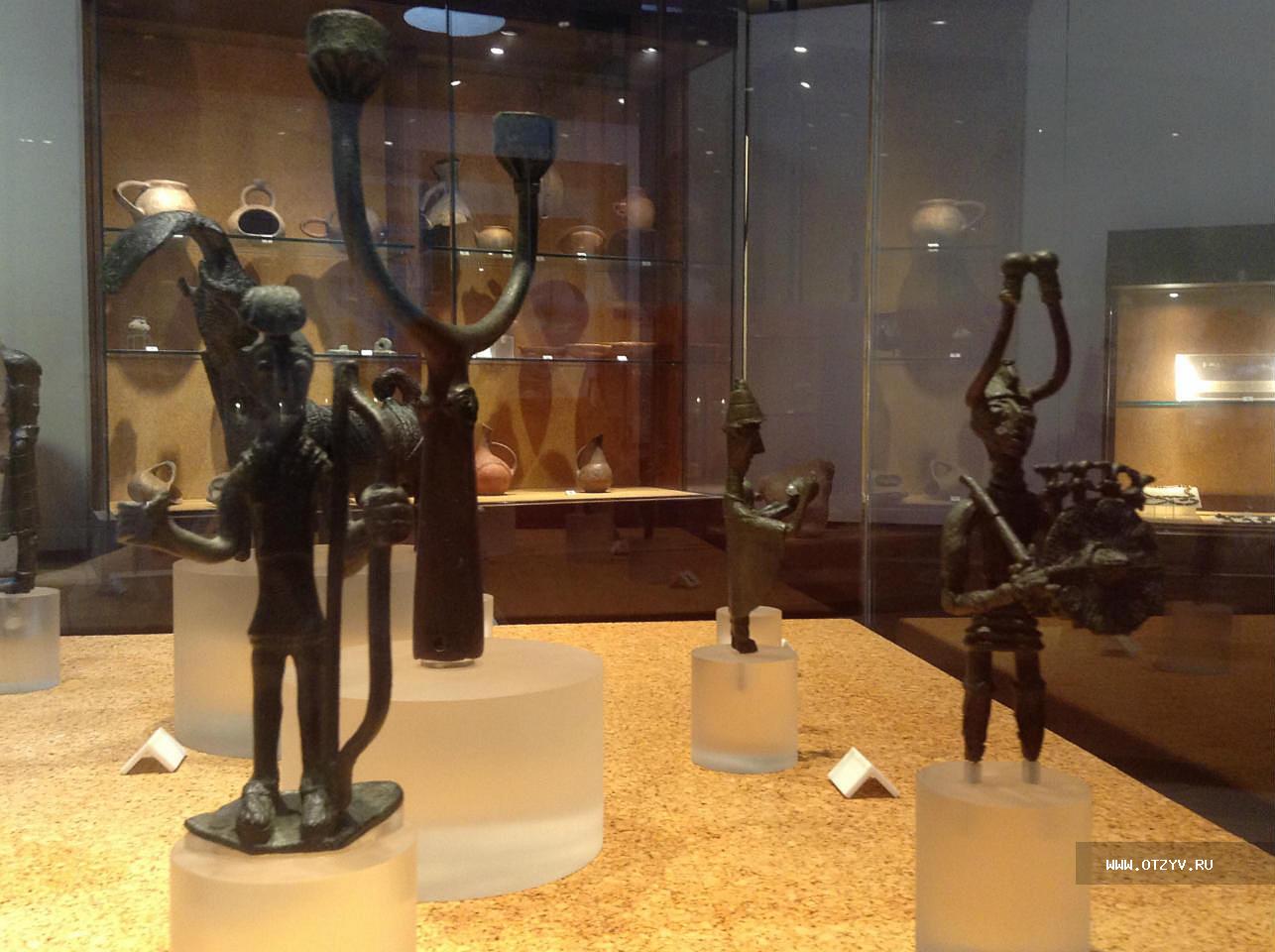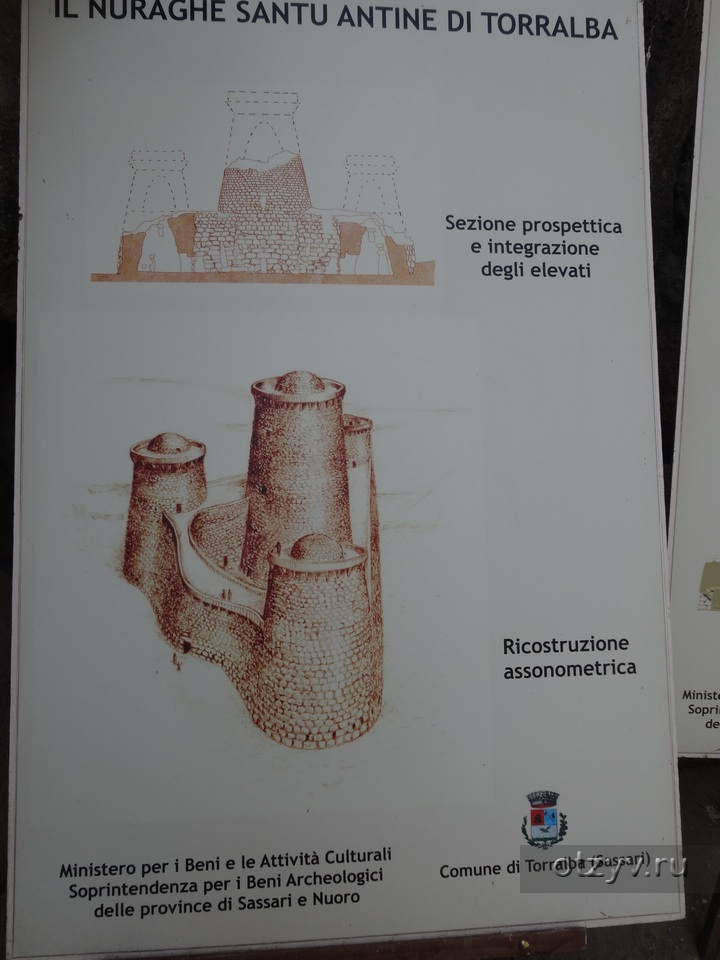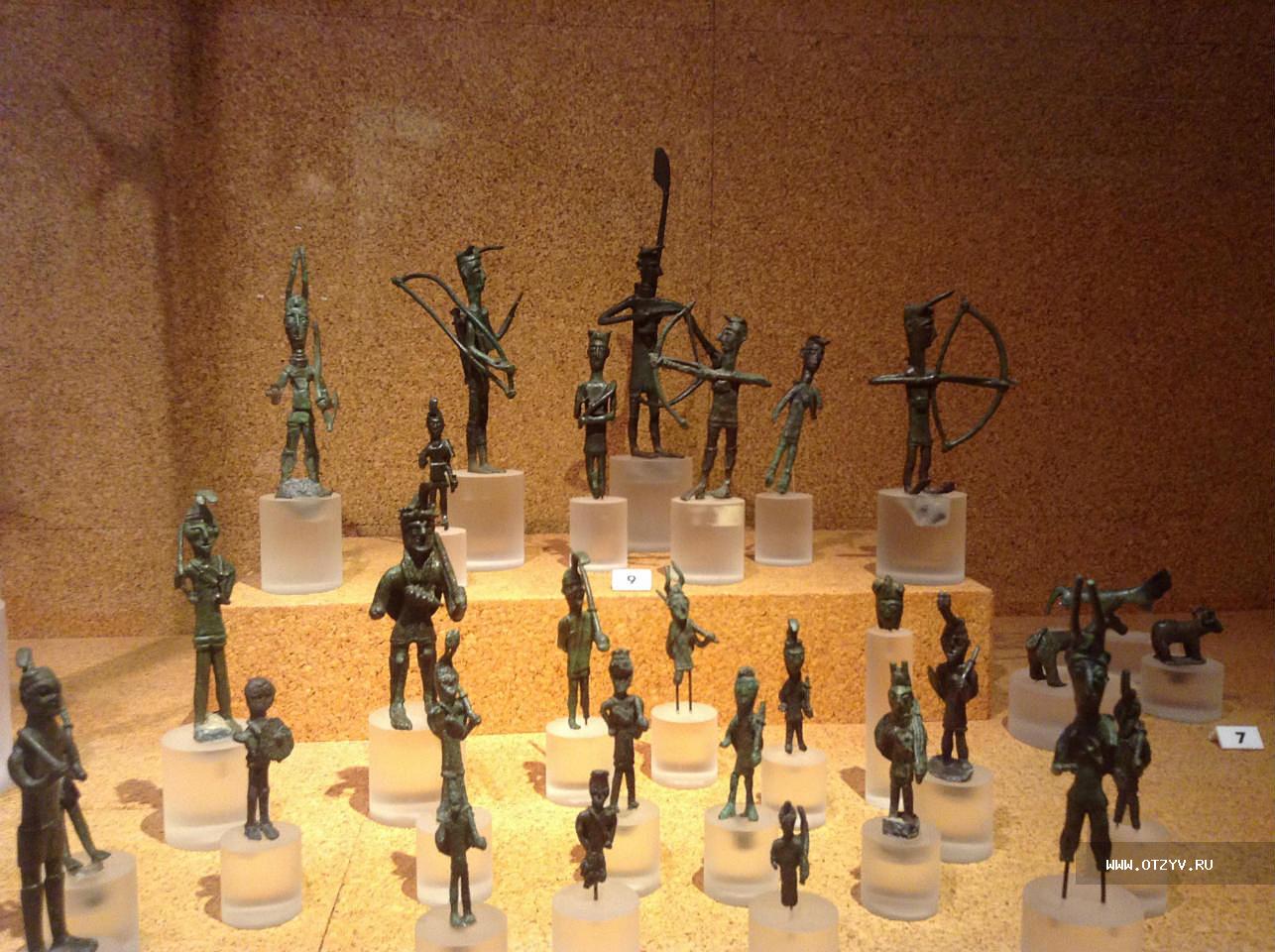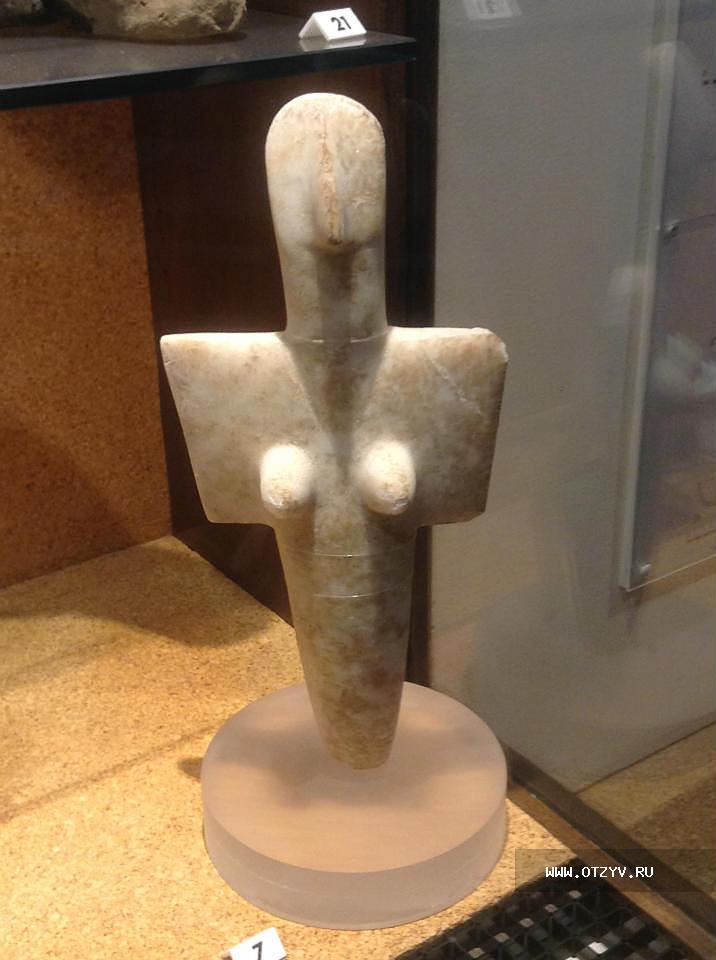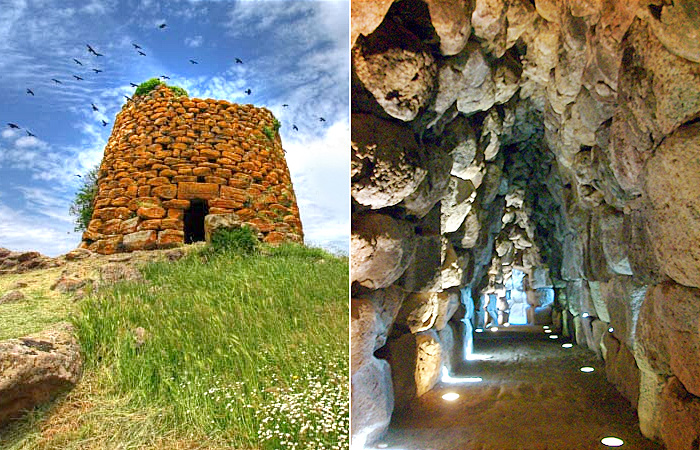Only the Egyptian pyramids can be compared with the Nuraghe power of mystery and grandeur. Nearly four thousand years ago, between 1600 and 1200 years before the Christian era, strange and still unsolved is how the ancient inhabitants of the island erected these stone circular structures. Huge stones were stacked to one another, absolutely without the aid of any fastening solution!
Stones are formed in regular concentric circles, which gradually decrease to the top and it all held together only under its own weight! Scientists still do not know the answer to the question how it was possible to erect these monumental buildings.
Across the island, the mountains and the plains, on the sea shore nuragica scattered settlements.
Huge towers, built from multiton stone blocks, is the biggest mystery of the island of Sardinia. Around these ancient buildings called Nuraghe, has long conducted scientific debate. The reason for this was the uniqueness of the structures, analogues in the world.
Initially, experts believed that the towers called “Nuraghe” is the burial grounds or the sanctuary of the first inhabitants of Sardinia. But according to the indigenous inhabitants, the Nuraghi– the defenses of the giants-Cyclops. Historical science myths not accept. But she could not give any convincing versions explaining the origins of the island eight thousand towers that could hide behind its walls about 250 thousand people at a time. Unclear and why their inhabitants suddenly decided to leave their impregnable home.
In ancient times, towers was far more than has survived to our days. Some of the researchers of the East called the fantastic numbers from 20 to 30 thousand. Many of them wiped from the face of the earth. The other is hidden from human eyes under the earth, and only a natural disaster cause them to rise to the surface. So, thanks to the terrible flooding that completely washed away one of the hills in 1949, the light of day surfaced a village with a Nuraghe, hidden in the ground for almost 25 centuries. What are these towers? It is a huge cone-shaped structure, the height of which sometimes reaches 20 meters. Evolved Nuraghe of large stone blocks, one after the other blocks stacked in a circle. A circle was superimposed on the circle. It is noteworthy that the monkeys did not used any mortar, the whole monumental structure was held only by the weight and proper position of blocks. The secret of the ancient architects was that the building they have used stone blocks of different rocks. Each was distinguished by density and shape, in addition, the higher up the rows of stones above the ground, the closer they converge to the center. The main entrance to the tower was located on the South side of the building, immediately followed by a short and wide corridor, through which you can get to the main hall. Sometimes rooms in the Nuraghe had a few, and the ceilings were vaulted.
Apart from free standing towers-Nuraghi were built icelie neurologische complexes. In fact it was a city consisting of one large Central Nuraghe and several small ones, connected by ditches and walls. The complex most often was on the ramparts. In the yard of this asylum was erected a small, round hut “pinnette”. As a result of building, in the courtyard of the complex appeared small streets, of a width of less than one meter.
To determine the time of construction of these structures is quite difficult. But, as a rule, the Nuraghi date back to the middle and late bronze ages, that is approximately XVIII-XV centuries BC.
Who was the architect of these buildings, also hard to say, because of nuraizah today we know quite a bit. Historians suggest that the first inhabitants of Sardinia came to the island about 10 thousand years ago. It is likely that the place of their former habitat was Corsica. According to one version, the nation-builders of the Nuraghe called mysterious term ShardanaoSerden, modern Sardinians believe that from them came all the island’s indigenous population. It is noteworthy that the term ShardanaoSerden as the names of one of the tribes, and is mentioned among the so-called “sea peoples” who, in the times of the ancient East was at war with Egypt and the civilizations in the middle East. It is believed that the part of the representatives of the “people” at the time could settle on the Apennine Peninsula, which led to the civilization of the Etruscans. Russian historian Alexander Nemirovsky was convinced that the era of the Nuraghi came at the time of the migration of the ancestors of the Etruscans from Asia Minor to Italy. However, the controversy about nuragici continue today for the reason that the ancient people do not like any of the Etruscans, nor the indigenous inhabitants of Sardinia, he’s not even similar to the Iberian representatives of the North African tribes, but the most important thing – that perhaps it even refers to the “peoples of the sea”.
The purpose of the construction of the Nuraghi for modern historians also remains a mystery. Speculation on this matter more than theories, and existing theories do not hold water. Nuraghe considered temples of the cult of fire, simple dwellings, fortifications and shelters, lookouts and monuments of military achievements, the graves of notable members of society and even mausoleums was here the ancient Egyptians. Finally, they were considered temples of the gods and the dwellings where lived the ancient giants.
As a rule, the criticism of the theory are concerned about the fact that if the Nuraghi were the places of burial, why they found no remains or treasure? If they served as settlements, there is the question of the practicality of these houses.
It can be assumed that the Nuraghi served as fortifications to protect residents from militant tribesmen. But for a tiny island of a few thousand bastions – overkill. Besides, which would have required the protection of this island when the first invaders came in Sardinia only in 1000 years after the construction of the Nuraghi?
In 1984 Professor from the University of Cagliari Carlo Masia put forward the version that the Nuraghe was a kind of Observatory, where people were observing astronomical objects and phenomena.
Confirmation of this unusual version is the fact that near the Nuraghe was found the so-called temple of the moon wells. According to Professor Malia, these unusual buildings were used for religious purposes. Each of the wells was laid out in such a way that once a year, the light of the moon fell into the well. As a result, after midnight, for several minutes, moonlight was reflected throughout the well. According to one version, the lunar sanctuary was used for determining the moment of the lunar Eclipse.
There is a legend that Nuraghe – not that other, as “tombs of giants”. There were even witnesses who allegedly saw with my own eyes their huge remains. But neither scientists, nor the cavers who explored the tower, they found nothing.
To date, in respect of the Nuraghe scientists tend to resort to so-called “compromise” theory. According to her, the Nuraghe was versatile and performed a variety of tasks. The proof is the fact that the construction of the Nuraghi were very different, from the seashore plains to the mountains and hills. A number of Italian researchers suggests that the Nuraghi served religious purposes. Female priestesses settled directly inside the Nuraghe, and around it was a settlement where they could stay and even live pilgrims and parishioners. It is also believed that the Nuraghi served as the venue of the mystical rituals.
- ©
- ©
If the purpose of the Nuraghi was exactly as it explains the shape and size of dwellings, set around a tower. Obviously, the pilgrim who came from afar and staying relatively short, there is no need a lot of living space. Found in one of the houses of the antlers gave rise to the assumption that this animal might be sacred to the first inhabitants of the island. Stored ritual items in special recesses in the walls of houses. It is possible that the deer could be revered as a guardian spirit of the home.
The most famous and impressive Nuraghe in Sardinia is su Nuraxi, which is located near the town of Barumini. The first excavations took place in this complex in 1950. In the heart of the complex is a huge, three-tiered stone tower, which is surrounded by many walls in a maze. Dates from the construction of the Nuraghe approximately XV century BC Near the tower, and in some sectors the intricate maze of well-preserved charm of a Cup, hollowed out of solid stone. What role they fulfilled in ancient times, is not yet known.
However, not only this famous su Nuraxi. Much more important is the fact that in su Nuraxi was discovered a bronze model of Nuraghe. Thanks to this discovery, modern scientists a much better understanding of what looked like these buildings in ancient times. However, here the opinions of historians are re-dispersed. Some believe that the model was symbolic for the ancient Sardinians, others tend to argue that it’s just a toy for kids of those times. The evidence of the latter was found there are numerous figures of warriors and priestesses, and also to this visibility, the statue of the mother goddess of the people. Today, all these findings are kept in the storerooms of the National archaeological Museum in Cagliari (capital of Sardinia, O.).
The decline of culture of the Nuraghi came in the 3rd century BC when Sardinia was occupied by the Roman armies. Gradually the stone “giants” began to empty, and with them faded and nuragica culture, assimilating with the Roman. Eventually disappeared and the last Nuraghe.
Finally, the last mysterious fact in the history of the Nuraghe was that leaving their homes, the ancient inhabitants of the island was walled in stone and clay tiles all inputs, and some of the places and objects in the Nuraghe and were buried by earth.
However, the ancient culture of the Nuraghe has not disappeared from the face of the earth without a trace. In addition to the majestic stone buildings, she left the archaeologists of a huge number of bronze objects, particularly figurines. These statues are known as bronzetto. These artifacts help to discover ancient people are better to judge his level of culture and the development of metallurgy.





